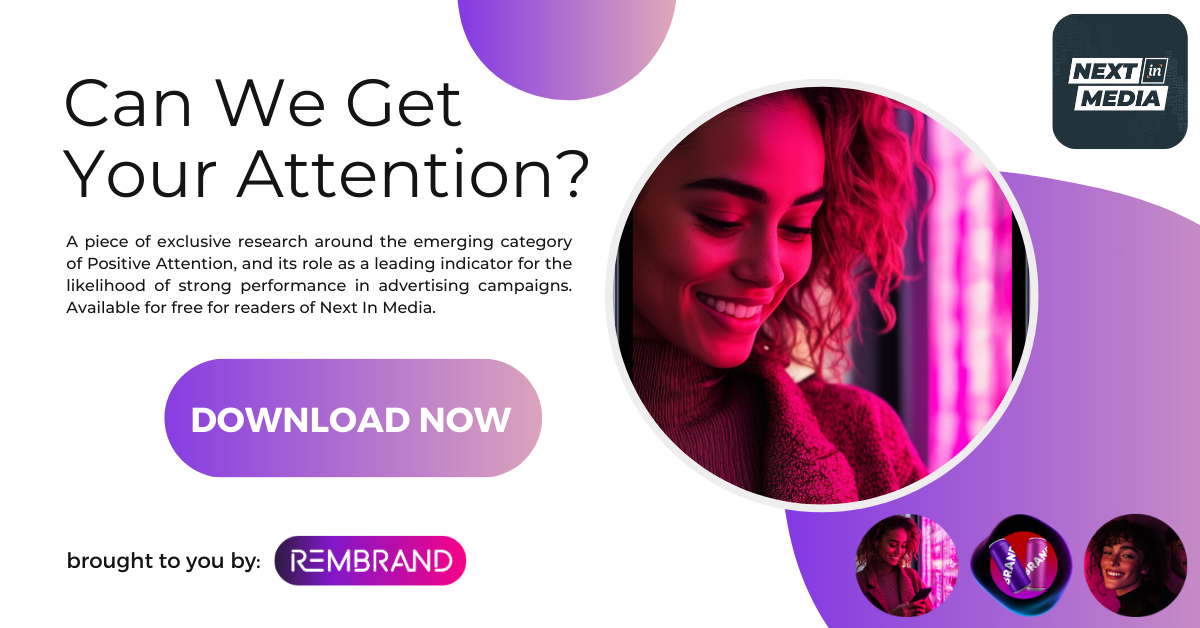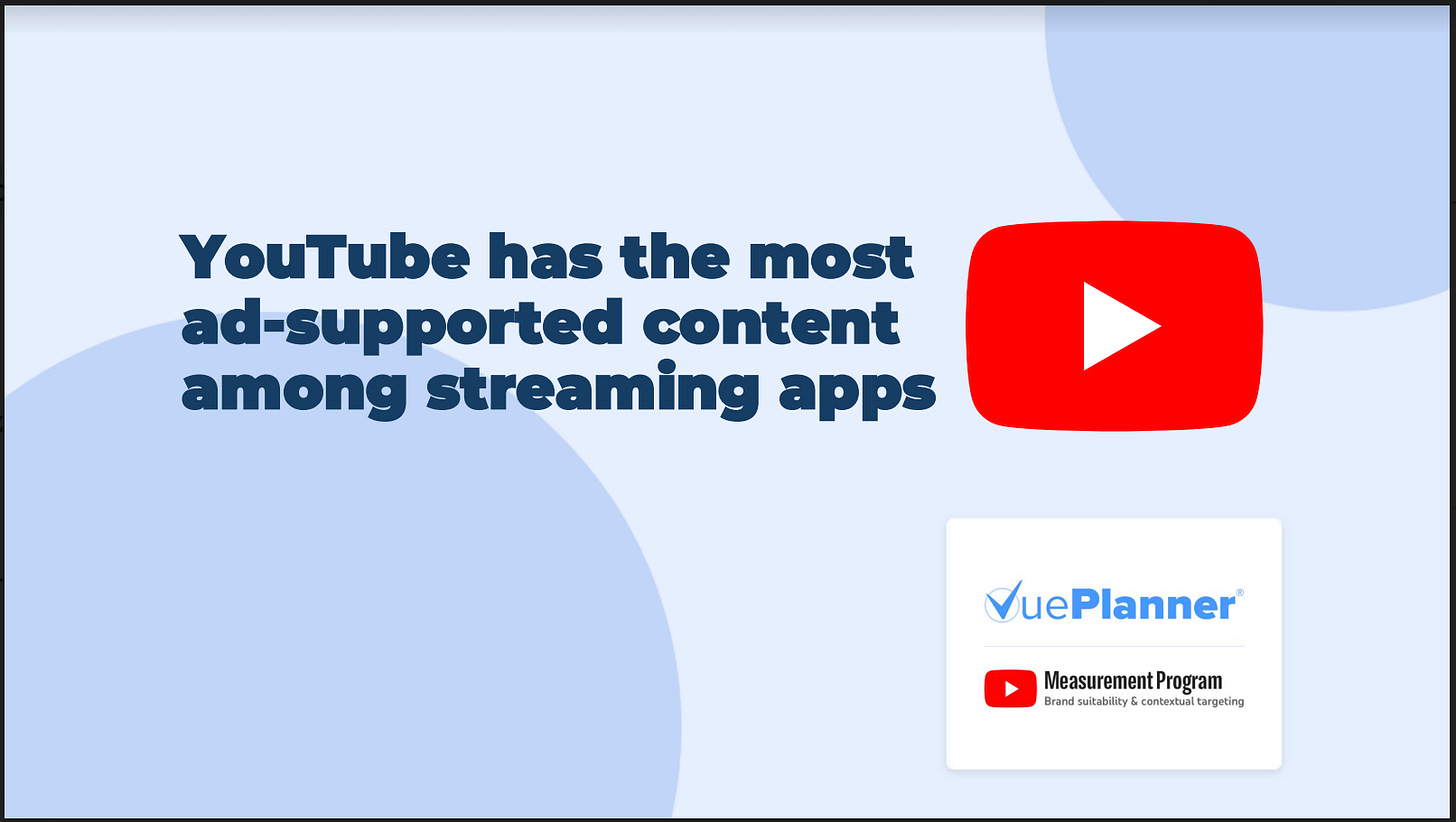A few quick notes:
I’m looking for sponsors for my podcast Next in Media for the second half of the year. If you’re interested, please get in touch at mike@shieldstrategic.com
I’m also available for content consulting projects - messaging help, thought leadership, etc. - mike@shieldsstrategic.com
A lot has been made of the Streaming Wars sort of being over, and how the battle for TV supremacy has come down to YouTube vs. Netflix.
Yet when it comes to TV advertising - the thing is, you gotta have inventory. and while Netflix continues to make steady progress on its ad business, the vast majority of US Netflix viewership remains ad free.
Meanwhile, as YouTube closes in on 12% of total TV viewing, per Nielsen, Amazon flipped the entire market last year when it turned on advertising as the default for Prime Video - suddenly flooding the market with streaming TV avails and instantly grabbing billions in upfront revenue.
Thus, this year presents an interesting dynamic. In a different era, YouTube’s dominant viewership would translate to the company being the “number 1 network” - providing the video giant an opportunity to drive the market, and almost dictate pricing and deal flow.
I had Brian Albert, Managing Director, YouTube Media Partnerships & Creative Works, on my podcast this week, and asked him whether in 2025 any one player can sort of set the tone for an upfront market (especially one with a weird tariff overhang).
“At the highest level, [that ranking] just validates the strength of our creator economy,” Albert said. “There's more content uploaded to YouTube in a single day than the entire content libraries of the five largest streaming platforms not named YouTube. That's mind-numbing. But it ultimately underscores how important our creator economy is to growing viewership on the TV screen and beyond.”
“That [time spent] is what is providing us with our competitive differentiation in market right now…customers have spoken and they've spoken with how they choose to spend their time outside of live sports.”
That’s the only caveat. If you look at Nielsen data, YouTube’s share puts it well ahead of Amazon’s. And it terms of driving culture, while Amazon has some sci-fi and dad-friendly hits, YouTube and Netflix dominate hands down. So you might wonder why I’m pitting them against each other here.
Except for that sports thing. 3C Ventures founder Michael Kassan nailed it in this this Business Insider piece
"I got one word for you today: sports," he said "That's what's selling.”
In fact, sports is what is mostly keeping the legacy networks viable. NBCU’s got the Olympics, Fox the Super Bowl, etc.
Which brings me back to last summer’s mega-NBA deal, which saw Disney, NBCU and Amazon commit to share the rights for $76 billion over 11 years. At the time, it was reported that YouTube sniffed around, but ultimately didn’t bite.
It might be something the company ends up regretting.
Brad Feinberg, North American VP of Media and Consumer Engagement at Molson Coors, told me last year that even as YouTube’s streaming share has jumped, his brand hasn’t necessarily moved to allocate more dollars accordingly - for one reason ,
“Obviously their scale makes them a viable competitor and overall audience,” he said. “In terms of how we make investment decisions. [YouTube’s TV share] doesn't automatically reflect that we're going to make a big significant change or jump in our strategy. And largely due to the fact that still a lot of live sports viewing is still done on other platforms.”
Maximize your YouTube advertising with VuePlanner. As a member of the YouTube Measurement Program for Brand Suitability and Contextual Targeting, VuePlanner enables you to buy with confidence, clarity, and precision. Using advanced technology and AI-powered optimization, VuePlanner offers custom-curated contextual collections, exclusive content strategies, and transparent reporting for measurable, impactful results. Take control of your campaign performance—partner with VuePlanner now.
That’s where the NBA would help.
Still, you might think the because Connected TV advertising is growing at a rapid clip, that everyone will just benefit. Yet consider that during the most recent round of media company earnings reports:
Peacock’s ad revenue only grew by 2.5% (per Madison and Wall) (no NFL or Olympics)
Paramount saw ‘DTC advertising’ revenue decline 9% (mostly because they had the Super Bowl in Q1 last year)
At Warner Discovery, streaming advertising jumped 35% (March Madness and international expansion)
Sports appear to be carrying some of these guys.
To be sure, YouTube is doing quite well when it comes to growing its ad business and and grabbing “real TV budgets.” As Bloomberg’s Lucas Shaw noted in his excellent newsletter, YouTube’s ad sales brought in nearly as much as NBCU, Paramount, Fox and Disney last year.
However, this year, not only does Amazon have a ton more TV ad inventory heading into the upfronts - the vast majority of which runs in highly-produced shows that many brands still prefer - its got Thursday Night Football, and lots of NBA games. Prime Video now also now claims to have 130 million US ad supported customers. While the streaming service has been stuck in the 3-4% share range, the NBA should help bump that number up.
So the question is, can YouTube’s huge TV viewership and creator cache fend off Amazon’s large, ‘premium in the eyes of some beholders’ scale?
Yes, YouTube has NFL Sunday ticket - but that’s a subscription service, and they only control so much inventory. I’m surprised the company didn’t go after Christmas Day NFL games a la Netflix, because there are only so many sports rights to go around, and they don’t come up for auction very often. According to Sports Business Journal, YouTube is closing in on an exclusive deal to stream an NFL game from Brazil - which would seem to signal the importance of snatching up a live sports broadcast to bring in more viewers and brands.
Major League Baseball presents an intriguing opportunity, as the league is losing its longstanding deal with ESPN. The challenge for YouTube is that MLB is an older-skewing, highly regional, and slow-moving game that may not be a great fit.
Sports aside, here’s what YouTube does have going for it during upfront season - it is the home the most popular creators in the world, which the company rightly refers to as the new Hollywood, and people are watching them on TV. It also has become a podcasting machine. To me, it will be crucial to productize those two vehicles effectively for brands.
I asked Albert about the podcasting ad market, which had previously been centered on audio advertisers.
“Recently we announced that there's over a billion monthly active users on podcasts, which again is a staggering number,” he said. “Our clients are able to tap into all of this rich content through a variety of different offerings. We build lineups that are just focused on podcasts. And you can also run a hundred percent share a voice takeovers against our top podcasters, which is something we announced during Brandcast last year, but we extended to our top podcasting creators this year.”
That kind of packaging is crucial for brands, who are sometimes overwhelmed by YouTube’s size and breadth. This seems like exactly the kind of strategy YouTube would emulate with top creators - e.g. creating mini networks where you can lock up inventory or brand integrations with the biggest names in different categories.
However, many of the biggest creators are going their own way, even seeking upfront-like deals that leave YouTube out. I asked Albert whether this is a challenge.
“We wholeheartedly support all of the third parties who are out there selling YouTube just as hard as we are every day,” he said. “In terms of how we work with creators, as I mentioned earlier, through my Creative Works team, we can work with creators on ads where they serve as talent in ads. We work with creators on brand deals where creators are producing organic content…all the way to branded content integrations where brands are more deeply integrating into creator shows. So it really runs the gamut.”
Okay, here are some other questions I have regarding the pending YouTube vs. Amazon battle::
Are creator integrations - which can be more complex to execute, and harder to measure, more vulnerable in a tarrif-uncertain economy?
How much does Amazon’s full funnel approach tilt the market? (As in, they can follow people from TV shows to research to shopping, etc.)
Could the NBA become oversaturated next year?
Could YouTube simply just lean into its much longer tail of advertisers, even if that means a tougher fight in the upfronts?
Is this entire upfront going to be held hostage by Chinese/US negotiations?
“Virtually all entertainment programming will be streamed through roughly five apps on your connected TV and phone,” said Albert. “And we're just going to continue focusing on what we can do to ensure that YouTube remains atop that list.
“We just have to control the controllables because that's all we can do between now and the upfront. There will be an upfront this year. It may take us a little bit longer.”







